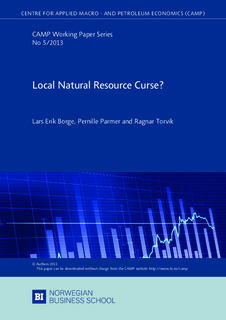| dc.description.abstract | The large variation in revenues among Norwegian local governments can partly be
explained by revenues collected from hydropower production. This revenue variation,
combined with good data availability, can be used to extend the literature on the resource
curse in two directions. First, to ensure that there is no problem of endogeneity
in the analysis we obtain a purely exogenous measure of local revenue by instrumenting
the variation in hydropower revenue, and thus total revenue, by topology, average precipitation
and meters of river in steep terrain. Second, using data for revenue derived
from hydropower production in Norwegian local governments we test the ’Rentier State’
hypothesis; that revenue derived from natural resources should harm efficiency more than
revenue derived from other sources such as taxation. Although we do find that higher
local government revenue reduces the efficiency in production of public goods, we do not
find that this effect is stronger for natural resource revenue than for other revenue. | nb_NO |
